

Catch Fish with
Mike Ladle
Information Page
SEA FISHING
For anyone unfamiliar with the site always check the FRESHWATER, SALTWATER and TACK-TICS pages. The Saltwater page now extends back as a record of over several years of (mostly) sea fishing and may be a useful guide as to when to fish. The Freshwater stuff is also up to date now. I keep adding to both. These pages are effectively my diary and the latest will usually be about fishing in the previous day or two. As you see I also add the odd piece from my friends and correspondents if I've not been doing much. The Tactics pages which are chiefly 'how I do it' plus a bit of science are also updated regularly and (I think) worth a read (the earlier ones are mostly tackle and 'how to do it' stuff).
Brazil 2019 - What might we catch and why don't we catch them?
Richard and I have caught some fairly spectacular fish from the shallow seas near his home in Northeast Brazil. However, there is something very odd about the fishing. Despite our efforts the catches of large, desirable fish have never been very consistent. Wading out to the coral reef and spinning with small lures or flies we catch coneys, graysbys, squirrel fish and other little, coral haunting species.
Richard's family exploring the reef pools on a low spring tide.
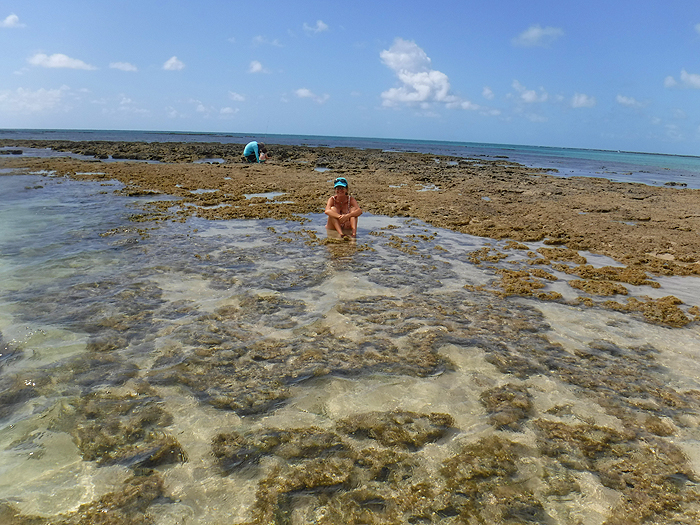
Richard casting a tiny plug over the reef.
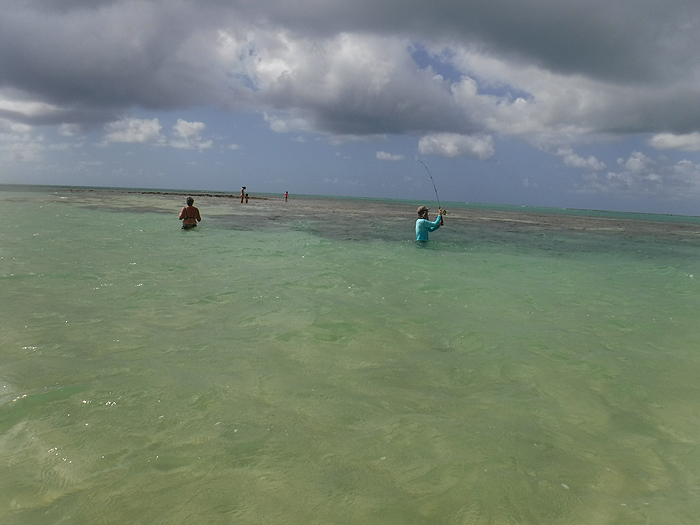
The big mouth of a small lure-caught coney.
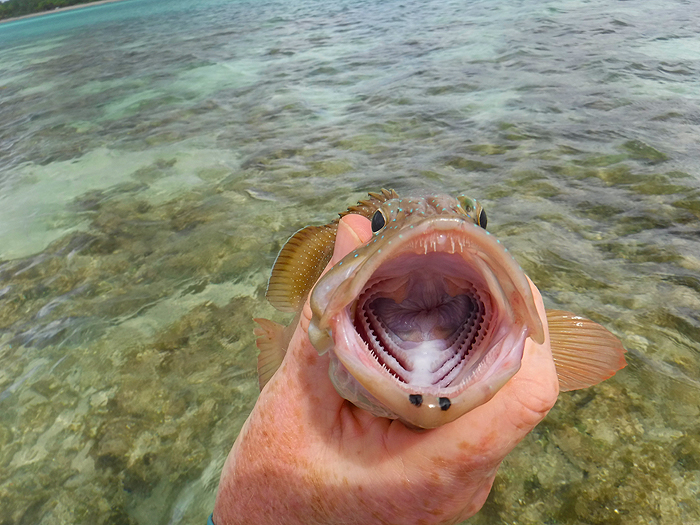
Coney, a little species of grouper, and lure.
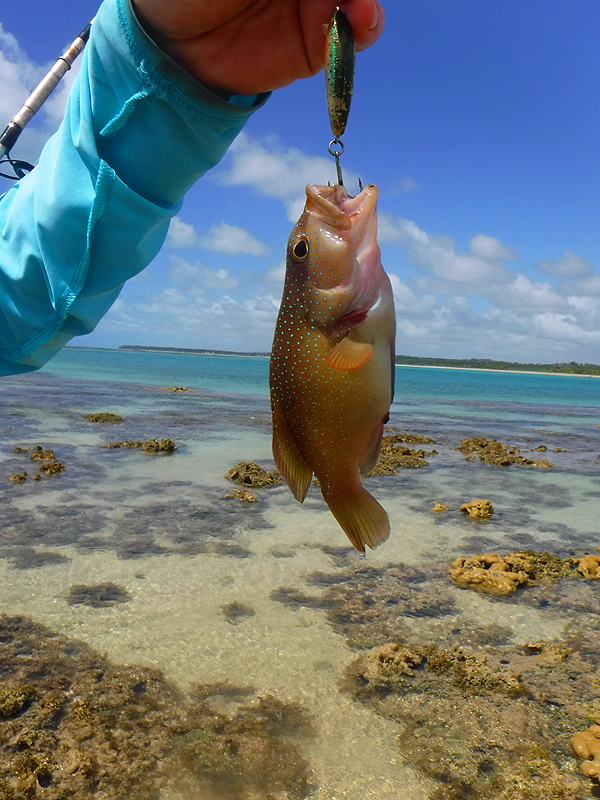
Another titchy grouper from the reef.
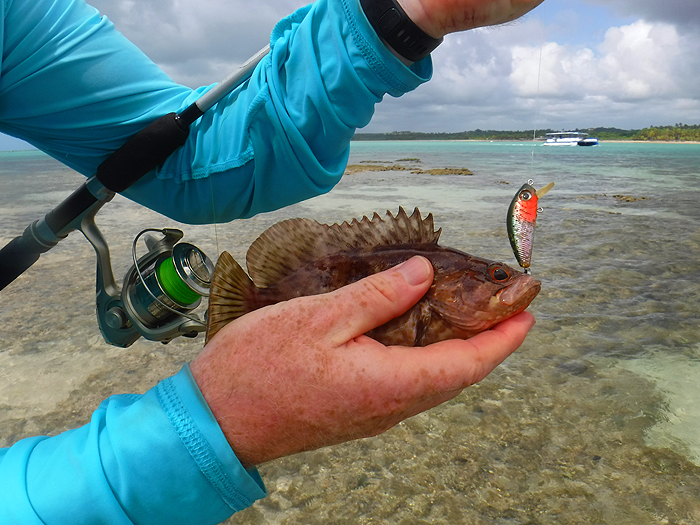
If we fish the extensive sandy/muddy flats inside the reefs with using prawn or fish baits, like those used by most locals, again we catch a huge variety of tiny fish species. Now you might think that we are just selecting against the larger specimens which are present but this doesn't seem to be the case. For sure many of the small fish are species which would never grow very big such as several species of catfish, croakers, grunts, snappers and the like but others are simply young (small) versions of species which could provide excellent sport IF THEY WERE A BIT LARGER.
This is particularly obvious in the catches of short beach seines used by the locals. So, for example, the nets which are worked by two people are walked out from the beach and hauled from not much more than 100m from the edge of the sea. We've seen hundreds of such hauls and the catch invariably consists of not just the species which take our small baits but also bait-fish such as half beaks and sardines and surprisingly the babies of species like bonefish, ladyfish, jacks, palometa, permit, mullets and some snappers, grunts and so on many of which we love to catch when they are bigger. There's almost never a decent sized fish present in the nets; WHY?
Hauling a two man beach seine
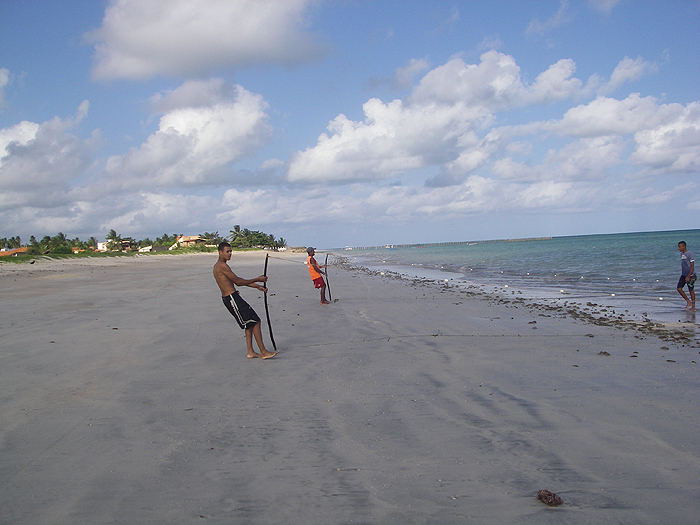
The best of an unusually good beach seine catch including half beaks, palometa, croaker and a baby snook.
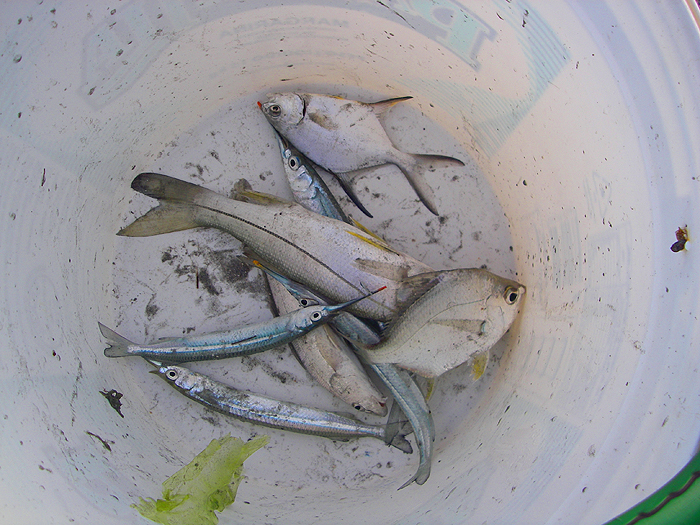
The virtual absence of big fish from rod catches and from the two man beach seines is puzzling. Numerous, fixed, fish traps set along many beaches and emptied at low water are designed to catch larger fish but again fish of more than a pound or two are rarely present in these. The effort of repairing and working the traps scarcely seems worthwhile.
Emptying a beach fish trap.
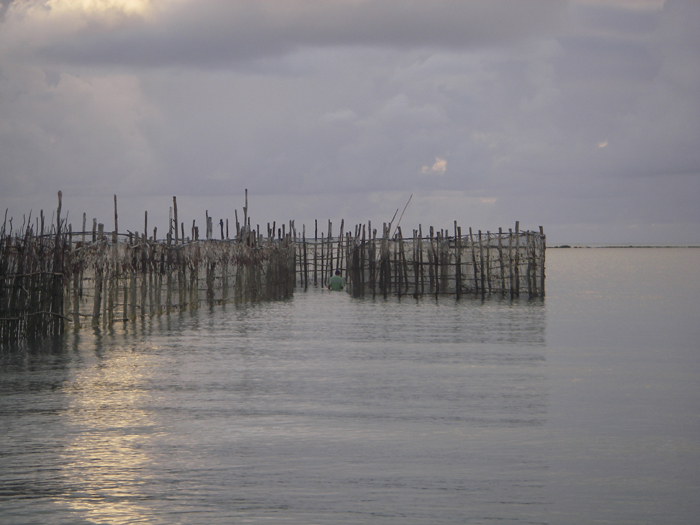
A tiny jack and a couple of grunts caught on small baits by the fish trap. Fish like these are too small to be trapped.
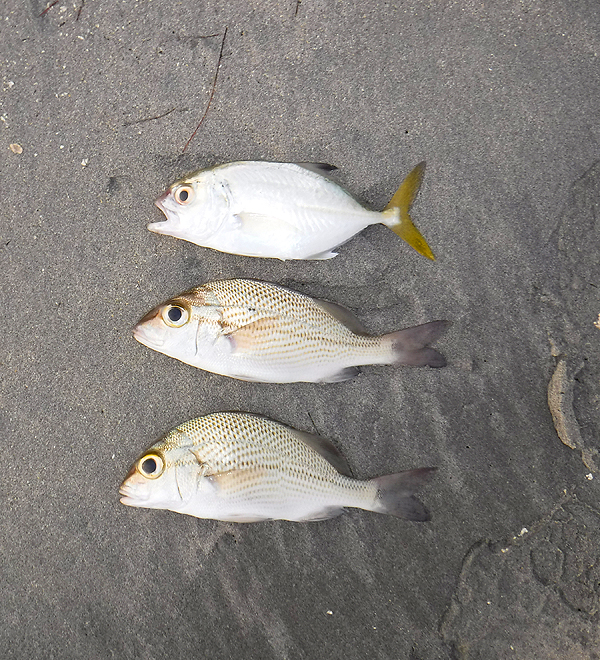
On our recent trip in january we saw something a bit different. Ten or twelve men brought a very big beach seine down to the same sandy beach. The net was run out for perhaps 400 metres and hauled back to the beach with five men on each of the two ropes. Each man was linked to the rope by a simple, detatchable harness around his back and slowly walked backwards rather like a tug of war. Each man unhitched himself in turn and rotated to the front of the queue.
Hauling the big beach seine.
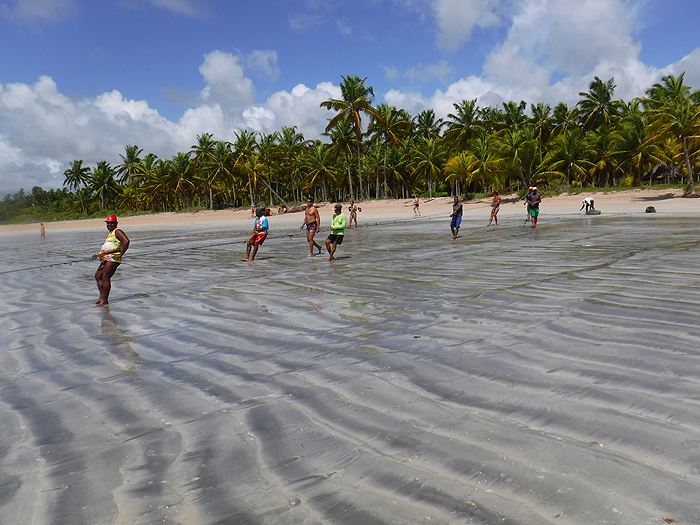
The wings of the big net are on the beach.
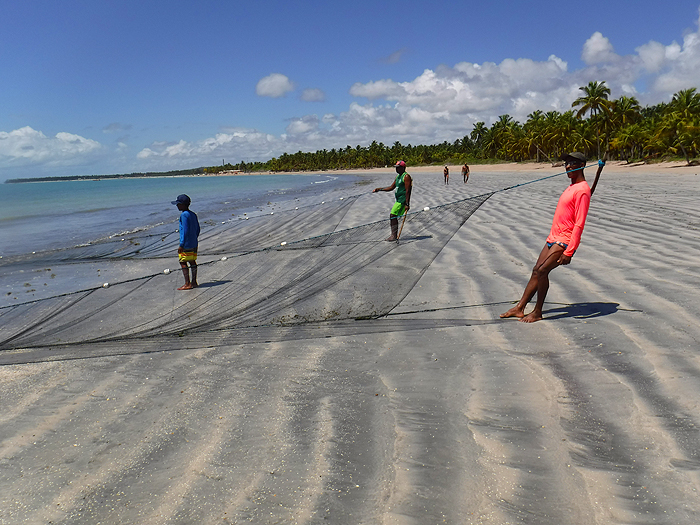
Note the large size of the net and the small size of the mesh.
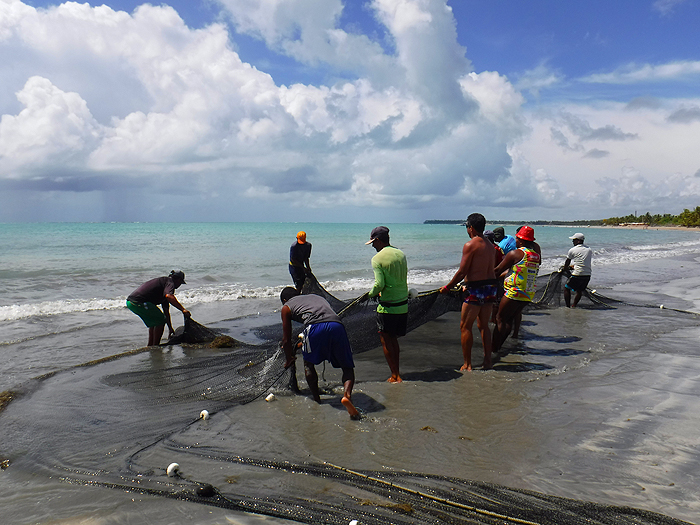
When the huge net was brought ashore it contained (not surprisingly) a large quantity of the usual small, silver species that are found in the smaller seines.
Lots of tiny silver fish - just like the smaller seine net catches.
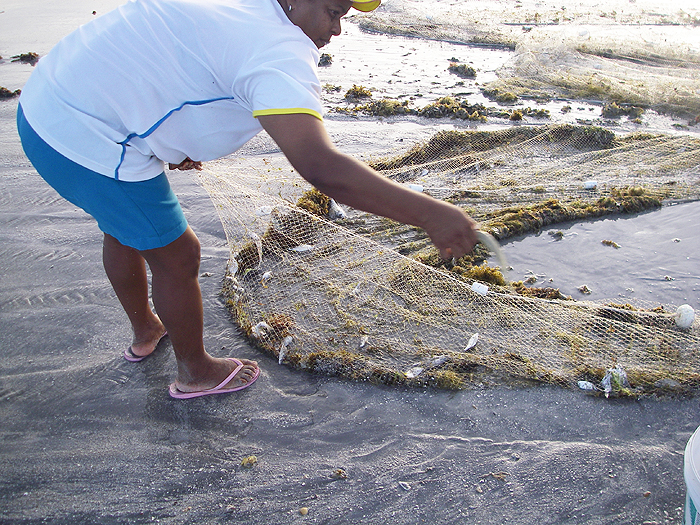
Our three year old granddaughter helps to collect the catch.
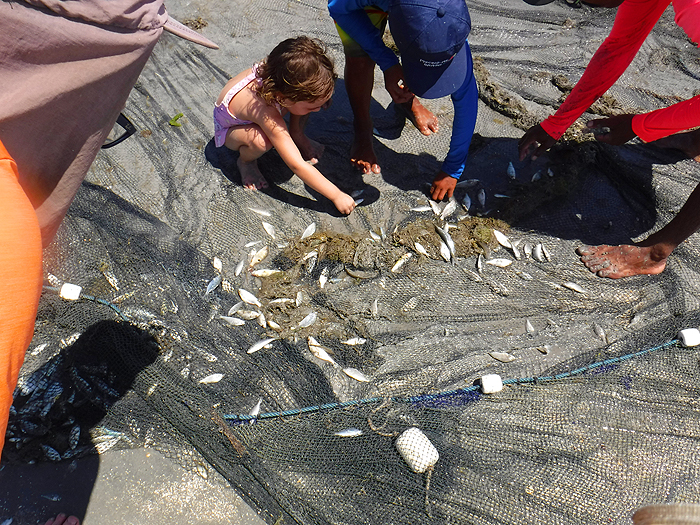
However there were a few surprises. In one haul there was a modest spanish mackerel and a couple of other fish in the three to four pound class and in another haul was a huge Cubera snapper of well over sixty pounds - there were no smaller specimens of any of these fish so they appear to be flukes.
A spanish mackerel and a couple of other sizeable fish from the big net.
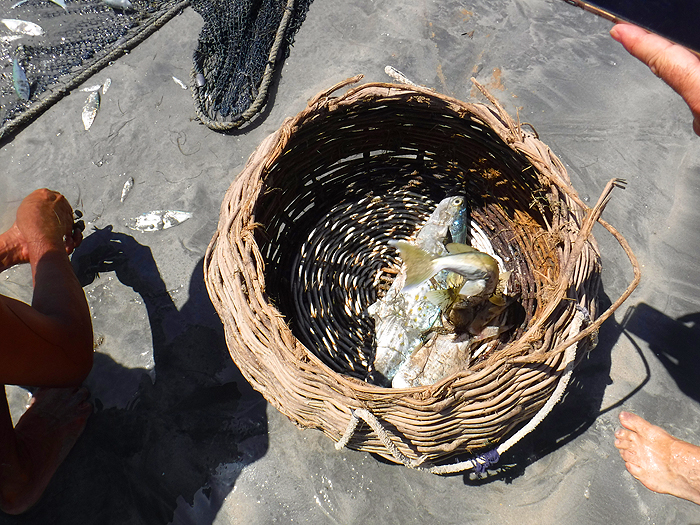
The monster Cubera snapper displayed for me by a local.
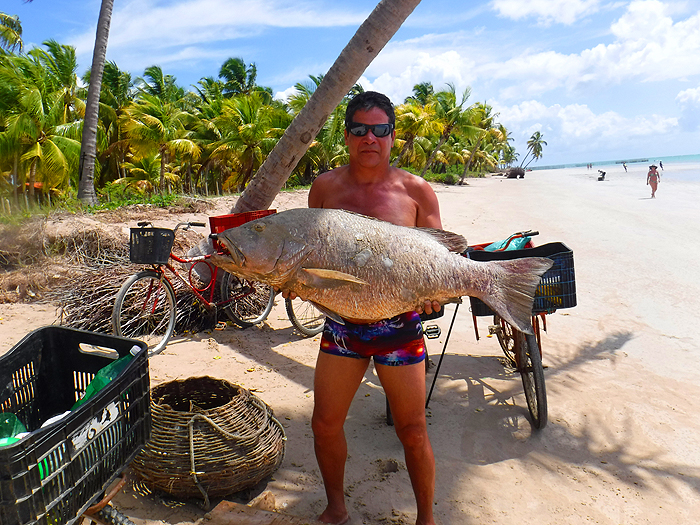
I can hardly imagine hooking one of these but clearly it is (a faint) possibility.
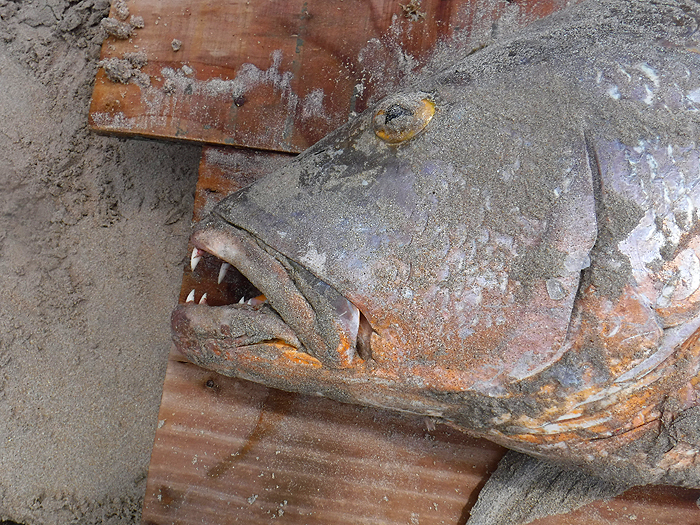
So, what's the answer? Why don't we catch the odd monster? Richard has been spooled smashed a couple of times over the past few years - probably by big sting rays?? It would seem that our chances of really big fish are limited by their scarcity. The more interesting question of course is why are there not more middling sized fish to be caught? Could it be that (1) The habitat is impoverished so that nothing grows any bigger than ten or twenty centimetres? This is improbable as we know there are at least some very big fish to be caught. Is it (2) Simply that the sand flats are nurseries and the bigger fish are elsewhere? This also seems unlikely as we've tried lots of other spots to no avail and the Brazilian anglers don't seem to do any better or even as well as us. (3) Could it be that centuries of trapping and, more recently, netting have wiped out the larger size classes of all inshore fish? This would seem the most probable answer. Although the fishing technology of traps and seine nets is basic and old fashioned it has persisted for a long time and the fish traps are in action all the time - even if they are not emptied. There must however, be enough adult fish surviving to breed and produce the offspring which populate the beaches in such large numbers. Is this a prime case for conservation management?
– PLEASE TELL YOUR TWITTER, FACEBOOK, EMAIL FRIENDS ABOUT THESE BOOKS.
NEW BOOK
"Fishing for Ghosts - Successful Mullet Angling"
written with David Rigden IT'S AVAILABLE FROM -ALSO THE NEW BOOK
“The Second Wave”
Written with Steve Pitts this is a SEQUEL TO THE BESTSELLER "Operation Sea Angler" IT'S AVAILABLE ON PAPER OR FOR YOUR KINDLE FROM -If you have any comments or questions about fish, methods, tactics or 'what have you!' get in touch with me by sending an E-MAIL to - docladle@hotmail.com